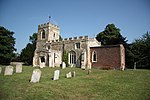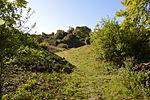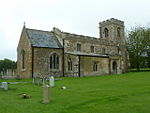Hinxworth Place

Hinxworth Place is a medieval manor house near Hinxworth, Hertfordshire, England. Formerly the Manor of Pulters, building was started c. 1390. The construction is of clunch with loose flint filling cavities in the lower part of the walls. There is 16th century decoration painted directly onto the stonework in one of the upper rooms. It was once owned by John Ward, son of Richard Ward, who was Lord Mayor of London for one month in 1484. After his death it passed to John Lambard, master of the Mercers' Company and alderman of London.The house was inhabited at one time by Cistercian monks of Pipewell Abbey in Northamptonshire. The Drury and Andrews map of 1766 shows an L shaped building with three separate outbuildings with indication of an avenue and other plantings.The large spring fed pond to the south of the house is one of the sources of the river Rhee which is a major tributary of the river Cam. In the early part of the 20th century it was owned by Walter Sale who farmed 250 acres (1.0 km2) but in the 1930s was compulsorily purchased by the county council who divided the land into four smallholdings each of about 60 acres (240,000 m2). The Sales remained tenants until 1949 by which time, the house having fallen into dereliction, it was sold to a banker who formed a syndicate of London professionals and artists (including the actor Peter Copley) who renovated it.Hinxworth Place was divided and sold during the 1960s and the larger part of the property is now the home and workplace of the sculptor John W Mills, a number of his works are displayed in the grounds.
Excerpt from the Wikipedia article Hinxworth Place (License: CC BY-SA 3.0, Authors, Images).Hinxworth Place
New Inn Road, North Hertfordshire
Geographical coordinates (GPS) Address Website External links Nearby Places Show on map
Geographical coordinates (GPS)
| Latitude | Longitude |
|---|---|
| N 52.04133 ° | E -0.19492 ° |
Address
Hinxworth Place
New Inn Road
SG7 5HG North Hertfordshire
England, United Kingdom
Open on Google Maps









